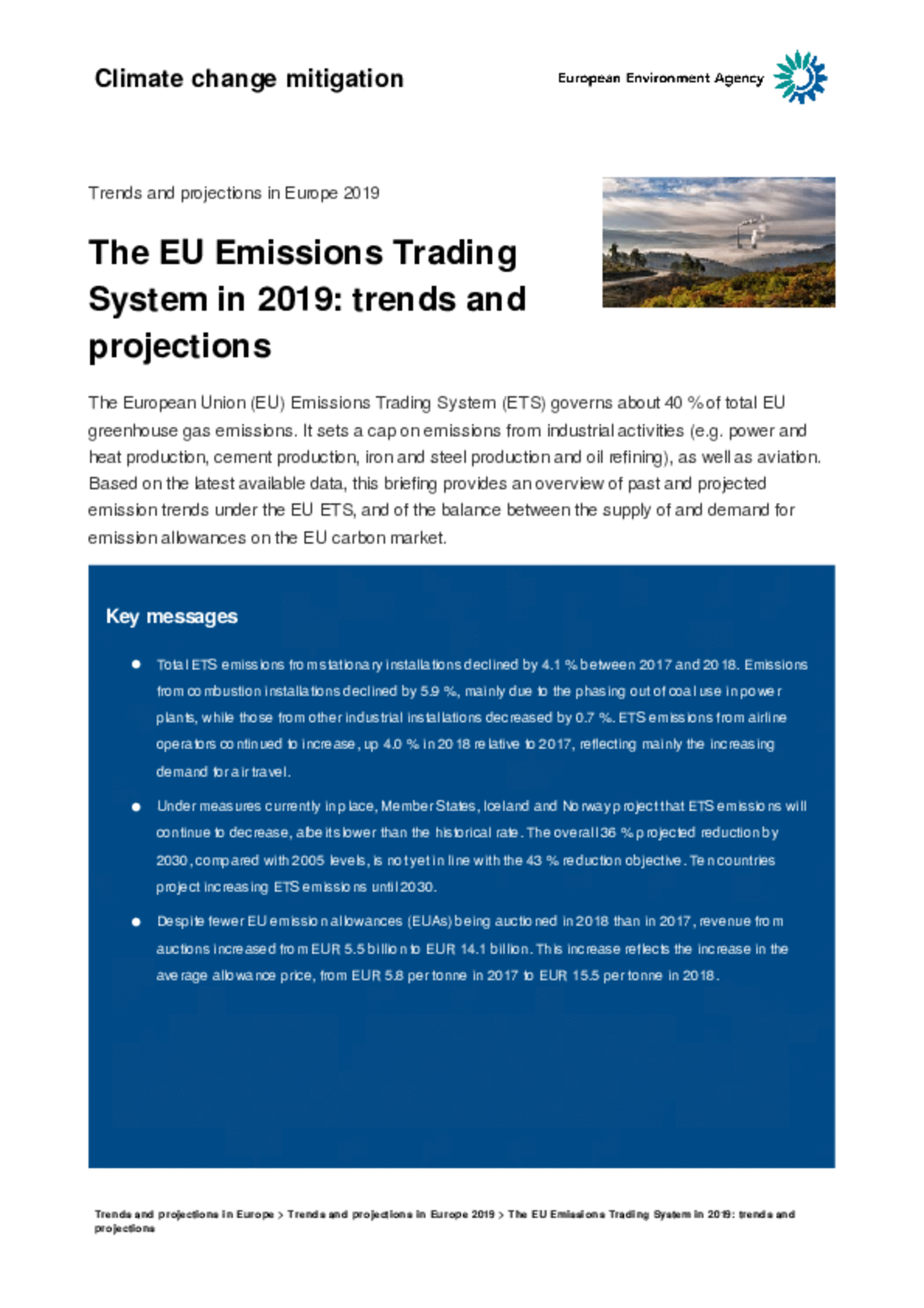All official European Union website addresses are in the europa.eu domain.
See all EU institutions and bodiesBriefing 9/2019
The European Union (EU) Emissions Trading System (ETS) governs about 40 % of total EU greenhouse gas emissions. It sets a cap on emissions from industrial activities (e.g. power and heat production, cement production, iron and steel production and oil refining), as well as aviation. Based on the latest available data, this briefing provides an overview of past and projected emission trends under the EU ETS, and of the balance between the supply of and demand for emission allowances on the EU carbon market.
ISBN: 2467-3196

